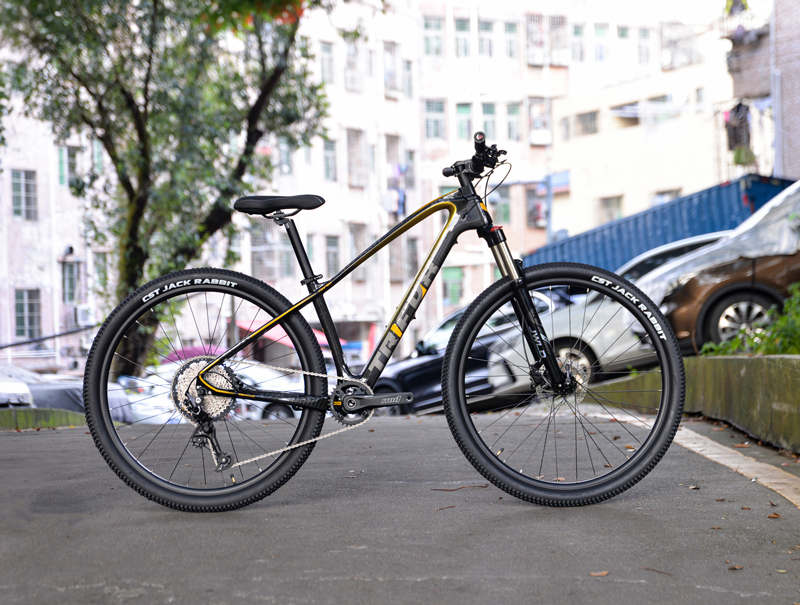
Building a bike with a high-quality hardtail frame can be an incredibly rewarding project, offering customization and performance tailored to your specific needs. Here's a step-by-step guide to help you get started. 1. Choose the Right Frame Start with a reliable and high-quality frame like the Trifox Carbon MTB Hardtail Frame MFM200. Known for its lightweight construction and durability, this frame provides an excellent foundation for your build. 2. Gather Essential Components Next, you'll need to gather all essential components: Fork: Choose a suspension fork that matches your riding style. Groupset: A high-quality groupset ensures smooth shifting and efficient power transfer. Wheels and Tires: Select wheels that are strong yet light, along with tires suited for your terrain. Brakes: Reliable disc brakes offer superior stopping power. 3. Assemble the Drivetrain Install the bottom bracket and crankset first, followed by the chain and derailleur. Ensure everything is aligned correctly for optimal performance. 4. Install the Fork and Handlebars Slide the fork into the head tube and secure it with the stem. Attach the handlebars, making sure they are at a comfortable height and angle. 5. Add the Wheels and Brakes Mount the wheels onto the frame and install the disc brakes. Make sure the brakes are properly aligned to avoid any rubbing against the rotors. 6. Final Adjustments Adjust the saddle height, handlebar position, and brake lever reach to fit your body perfectly. Tighten all bolts securely and check for any loose parts. 7. Test Ride Before hitting the trails, take your new bike for a test ride. Ensure everything functions smoothly and make any necessary tweaks. Conclusion Building a bike with a high-quality hardtail frame like the Trifox Carbon MTB Hardtail Frame MFM200 is a fulfilling endeavor that results in a personalized, high-performance ride. Follow these steps for a successful build and enjoy the unmatched satisfaction of riding a bike you've built yourself. Happy trails!
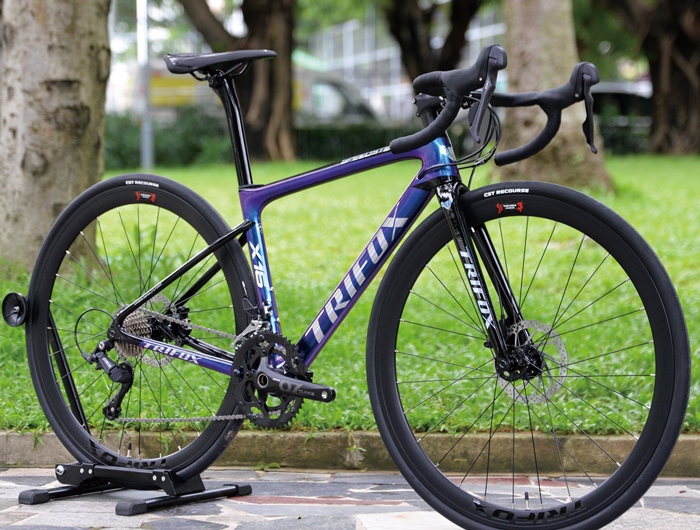
Investing in an ultra-light road bicycle can be a game-changer for any cyclist, whether you're a seasoned racer or a weekend warrior. But what exactly makes these bikes worth the investment? Let's break it down. 1. Speed and Performance The primary advantage of an ultra-light road bicycle is its enhanced speed and performance. Lighter bikes require less energy to accelerate and maintain high speeds, making them ideal for competitive racing and long-distance events. The reduced weight not only aids in quicker sprints but also improves climbing efficiency, allowing you to tackle hills with greater ease. 2. Maneuverability and Control An ultra-light frame significantly boosts maneuverability, giving you more precise control over your bike. This is particularly beneficial in tight corners, descents, and technical sections of your ride. Enhanced control leads to improved safety and confidence, letting you focus on pushing your limits. 3. Reduced Fatigue Carrying less weight means exerting less effort, which translates to reduced rider fatigue. Over long rides, this can make a substantial difference in your endurance and overall enjoyment. By conserving energy, you can ride longer and recover faster. 4. Aesthetic and Technological Innovation Ultra-light road bicycles often feature cutting-edge technology and sleek designs. Materials like carbon fiber offer not just a reduction in weight, but also superior strength and vibration dampening properties. These bikes are a blend of form and function, catering to cyclists who appreciate both aesthetics and performance. Top Pick: Trifox Ultra Light Road Bicycle For those serious about upgrading their ride, consider the Trifox Ultra Light Road Bicycle. Known for its exceptional build quality and innovative design, this bike offers all the benefits of ultra-light cycling while maintaining durability and style. Conclusion An ultra-light road bicycle is more than just an upgrade; it's an investment in speed, control, and riding pleasure. Whether you're aiming to shave seconds off your race time or simply enjoy a more effortless ride, the benefits are undeniable. Make the leap to an ultra-light road bike and experience the difference it can make on every ridd.
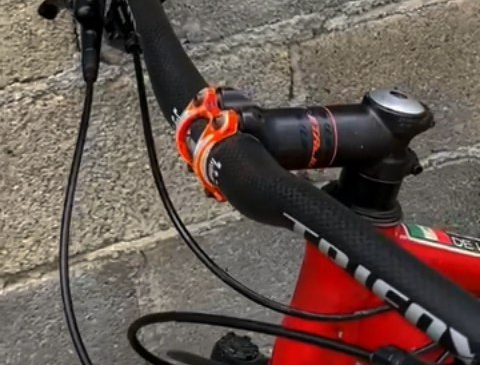
When it comes to optimizing your mountain bike, selecting the right components can make a significant difference in your riding experience. Among the many upgrades available, a carbon riser handlebar stands out for its numerous benefits. Let's delve into why choosing a carbon riser handlebar could be the perfect enhancement for your mountain biking adventures. Lightweight and Strong One of the most compelling reasons to opt for a carbon riser handlebar is its lightweight nature. Carbon fiber is known for its outstanding strength-to-weight ratio, making it an ideal material for handlebars. By reducing the weight of your bike's front end, you can achieve better maneuverability and control, especially on technical trails. This weight reduction is not just about performance; it also means less fatigue during long rides, allowing you to push your limits with greater ease. Enhanced Vibration Dampening Mountain biking often involves navigating rough terrains that can transmit a lot of vibration to your hands and arms. A carbon riser handlebar excels in damping these vibrations, offering a smoother and more comfortable ride. This feature is particularly beneficial during extended rides or on trails with constant bumps and jolts. Improved Riding Position Riser handlebars are designed to elevate the rider’s position, providing a more upright stance. This posture not only enhances comfort but also improves visibility and control over the bike. For riders who prefer a laid-back yet confident riding style, a riser handlebar is indispensable. The increased height also facilitates easier handling during descents and sharp turns. Aesthetic Appeal Let’s not overlook the aesthetic advantage. Carbon riser handlebars have a sleek, modern look that can instantly upgrade the appearance of your bike. With clean lines and a premium finish, they add a touch of sophistication to your setup. Durability Carbon fiber is incredibly durable and resistant to fatigue, making it a reliable choice for demanding off-road conditions. Unlike aluminum handlebars, which can bend or corrode over time, carbon handlebars maintain their integrity and performance for the long haul. Top Pick: Trifox Carbon Riser Handlebar If you're considering upgrading to a carbon riser handlebar, check out the Trifox Carbon Riser Handlebar RHB300. Known for its exceptional quality and engineering, this handlebar offers all the benefits mentioned above. Designed with precision, it promises to enhance your mountain biking experience by combining strength, flexibility, and style. Conclusion Choosing a carbon riser handlebar for your mountain bike is more than just a performance upgrade; it’s an investment in comfort, durability, and overall riding enjoyment. Whether you're a seasoned rider or a beginner looking to improve your setup, the advantages of a carbon riser handlebar are clear. From reduced weight and enhanced vibration dampening to improved riding position and aesthetic appeal, a carbon riser handlebar is a versatile component that can significantly elevate your mountain biking experience. Make the switch today and feel the difference on your next ride!
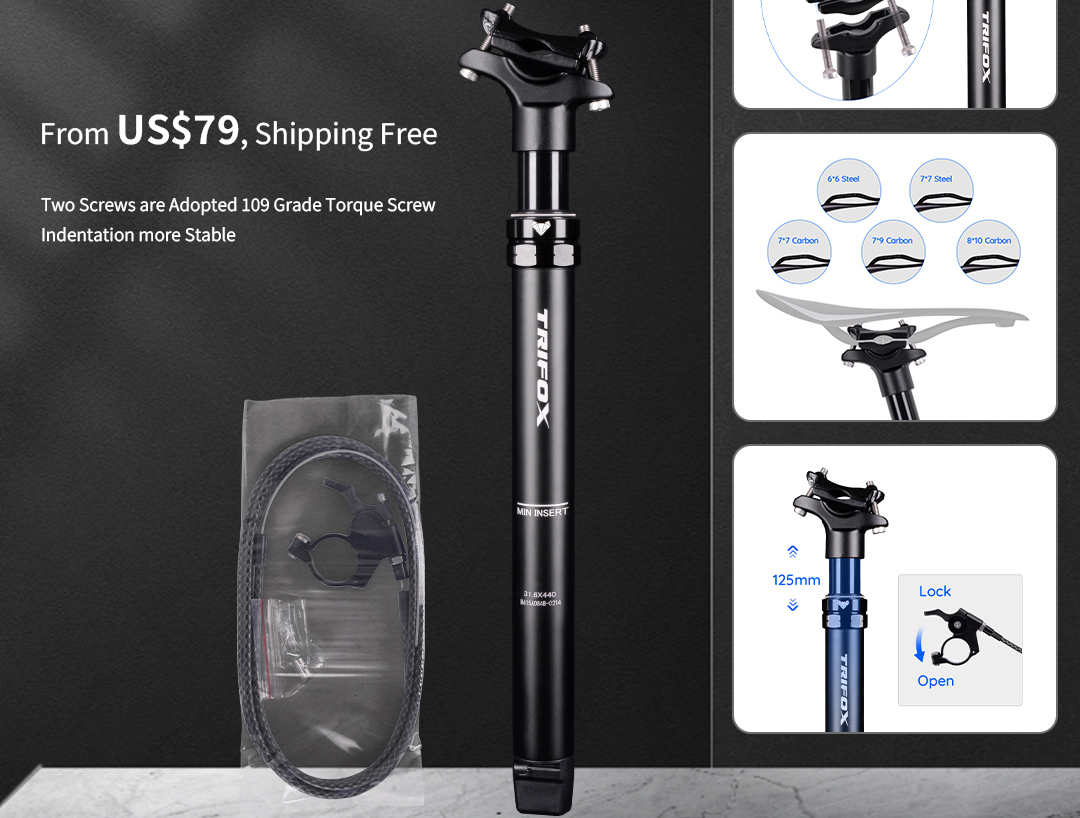
When it comes to enhancing your biking experience, investing in new components can make a world of difference. One upgrade that has gained immense popularity among mountain bikers is the dropper seatpost. But is it the upgrade your bike needs? Let’s explore the benefits and considerations to help you decide. What is a Dropper Seatpost? A dropper seatpost is a type of adjustable seatpost that allows the rider to change the height of the saddle on the fly, typically using a remote lever mounted on the handlebars. This feature is invaluable for mountain bikers who navigate varying terrains and need to adjust their saddle height frequently for optimal performance and safety. Key Benefits of a Dropper Seatpost Improved Control and Safety:Lowering the saddle while descending steep or technical trails lowers your center of gravity, providing better balance and control. This leads to increased confidence and safety on challenging descents. Enhanced Climbing Efficiency:At full height, a dropper seatpost allows you to maintain an efficient pedaling position while climbing. This dual functionality ensures that you’re always in the best position for the section of the trail you're tackling. Versatility:Whether you’re hitting jumps, navigating rocky terrain, or cruising down smooth paths, a dropper seatpost adapts to your needs. This adaptability makes it an essential component for avid mountain bikers who face diverse trail conditions. Reduced Fatigue:Constantly stopping to manually adjust your saddle can be tiring and interrupt your flow. With a dropper seatpost, adjustments are seamless and quick, allowing you to focus more on riding and less on fiddling with your bike. Considerations Before Upgrading Compatibility:Ensure your bike frame is compatible with a dropper seatpost. Some older frames might not have the required routing for internal cables or the correct diameter for the seatpost. Cost:Dropper seatposts can be a significant investment. However, considering the improvement in performance and enjoyment, many riders find it a worthy upgrade. Maintenance:Dropper seatposts have moving parts and hydraulic systems that may require maintenance over time. Consider the additional upkeep when deciding on this upgrade. Top Pick: Trifox Dropper Seatposts If you're convinced that a dropper seatpost is the upgrade your bike needs, check out the Trifox Dropper Bike Seatposts. Trifox offers high-quality dropper posts known for their reliability and smooth operation. With options catering to different budgets and requirements, you’re sure to find a model that fits your biking style and enhances your overall ride. Conclusion A dropper seatpost is more than just a luxury; it's a practical upgrade that can significantly improve your mountain biking experience. By offering better control, efficiency, and versatility, it can transform your rides and boost your confidence on the trails. Evaluate your needs and consider making this valuable addition to your bike setup.

Matching your bike frame with the right rim brakes is essential for achieving better control and a safer ride. Rim brakes are a popular choice for road bikes due to their lightweight design and effective braking performance. Here’s how to ensure your bike frame and rim brakes work seamlessly together for optimal control. First, consider the compatibility of your bike frame with rim brakes. Not all frames are designed to accommodate rim brakes, especially modern models that may favor disc brakes. Check the manufacturer’s specifications to ensure your frame has the necessary mounts and clearances for rim brakes. This includes confirming the placement and type of brake bosses on the frame and fork. Next, evaluate the brake calipers. Rim brakes typically come in two main types: caliper brakes and cantilever brakes. Caliper brakes are common on road bikes, offering direct pull and consistent braking power. Ensure the reach of the caliper brakes matches the distance from the brake mounts to the rim. Cantilever brakes, often found on cyclocross and touring bikes, provide more clearance for wider tires and are ideal for mixed terrain. The wheel size and tire width are also crucial factors. Rim brakes need to align perfectly with the braking surface on the rim. For instance, 700c wheels are standard on road bikes, and the brake pads should make full contact with the rim for maximum braking efficiency. Wider tires might require longer-reach brakes to fit properly within the frame and fork. Consider the material of your rims as well. Alloy rims are commonly used with rim brakes because they offer a solid braking surface and good heat dissipation. Carbon rims can also be used but often require specific brake pads to avoid overheating and ensure reliable performance. Matching the brake pads to the rim material is critical for consistent braking power and longevity. Pay attention to the brake levers and cables. High-quality brake levers and well-maintained cables ensure smooth operation and responsive braking. Make sure the brake levers are compatible with your brake calipers. Regularly check and replace worn cables to maintain optimal performance. Lastly, fine-tuning and regular maintenance are key. Properly adjusting the brake pads to sit parallel to the rim and ensuring even pad wear can significantly improve control. Regularly inspect and replace brake pads as needed to maintain effective braking. In conclusion, matching your bike frame with the right rim brakes involves considering frame compatibility, brake type, wheel size, rim material, and brake components. By paying attention to these details, you can achieve better control and a safer ride. For high-quality rim brakes and bike frames, explore trusted brands and components.
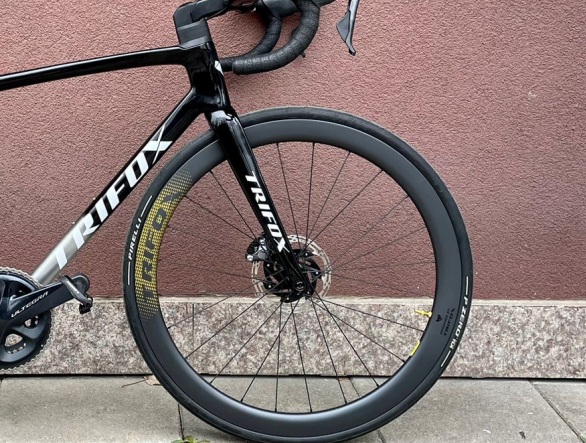
Choosing the right wheel size is crucial for optimizing your cycling experience, whether you’re an avid road cyclist, a mountain biker, or a commuter. The wheel size impacts your bike's handling, comfort, and performance. Here’s how to pick the right wheel size to meet your specific cycling needs. First, identify your riding style and terrain. Road cyclists typically use 700c wheels, which offer a good balance of speed and stability on paved surfaces. These wheels have a larger diameter, allowing for smoother rolling over long distances. If you're into mountain biking, you might choose between 26-inch, 27.5-inch (650b), and 29-inch wheels. Each size has its benefits: 26-inch wheels are nimble and responsive, 27.5-inch wheels offer a mix of agility and rollover capability, while 29-inch wheels provide better traction and roll over obstacles more easily. Next, consider your height and frame size. Taller riders often feel more comfortable with larger wheels like 700c or 29-inch, as they better match their proportions. Smaller riders may prefer 650c or 27.5-inch wheels for better maneuverability and control. Ensure that your bike frame is designed to accommodate the wheel size you choose, as this affects the bike’s geometry and overall ride quality. Think about the type of riding you do most frequently. If you commute or prefer leisure rides on smooth roads, 700c wheels are usually ideal. For mixed-terrain or adventure riding, 650b wheels provide versatility with wider tire options for added grip and comfort. Mountain bikers who enjoy technical trails might favor the agility of 27.5-inch wheels, while those tackling rough, cross-country trails might opt for the stability of 29-inch wheels. Evaluate the availability of tires and components for your chosen wheel size. Some sizes, like 700c and 29-inch, have a broader range of tire options, making it easier to find replacements or upgrade your setup. Make sure the wheel size you choose offers the flexibility you need for your riding style. Finally, test ride bikes with different wheel sizes if possible. Personal preference plays a significant role in how comfortable and confident you feel on a bike. Trying out various sizes can help you determine which wheel size provides the best fit for your needs. In conclusion, picking the right wheel size involves considering your riding style, terrain, height, frame compatibility, and personal preference. By taking these factors into account, you can select a wheel size that enhances your cycling experience and meets your specific needs.

Determining the perfect tire width is essential for achieving a comfortable bike ride. Tire width influences various aspects of your cycling experience, including comfort, rolling resistance, and handling. Here's how to select the ideal tire width for your needs. First, consider your riding terrain. If you primarily ride on smooth, paved roads, narrower tires (23-28mm) are typically preferred. These tires offer less rolling resistance, allowing for faster speeds and efficient performance. However, if you frequently encounter rough or uneven surfaces, wider tires (30-35mm or more) provide better shock absorption and comfort, as they can handle bumps and imperfections more effectively. Next, think about your riding style. Competitive road cyclists often opt for narrower tires because they prioritize speed and aerodynamics. On the other hand, recreational riders and commuters may find that wider tires are more comfortable for longer rides, as they reduce vibrations and provide a smoother experience. Bike compatibility is another important factor. Ensure that your bike frame and fork have enough clearance to accommodate the desired tire width. Modern road bikes and gravel bikes are designed to support wider tires, but it's always best to check the manufacturer's specifications for your specific model. Consider the impact of tire width on pressure. Wider tires can be run at lower pressures without the risk of pinch flats. Lower pressure allows the tire to conform to the surface better, improving grip and comfort. For instance, a 32mm tire can be comfortably ridden at lower pressures than a 25mm tire, providing a cushier ride. Evaluate the trade-off between comfort and performance. While wider tires offer enhanced comfort, they can slightly increase rolling resistance compared to narrower ones. However, advancements in tire technology have minimized this gap, making wider tires a viable option even for performance-oriented cyclists. Finally, personal preference plays a significant role. Some cyclists prefer the nimble feel of narrower tires, while others appreciate the stability and confidence that wider tires provide. It's a good idea to experiment with different widths to find what feels best for you. In conclusion, determining the perfect tire width involves considering your riding terrain, style, bike compatibility, and personal preference. By taking these factors into account, you can select a tire width that enhances comfort and improves your overall cycling experience. Happy riding!
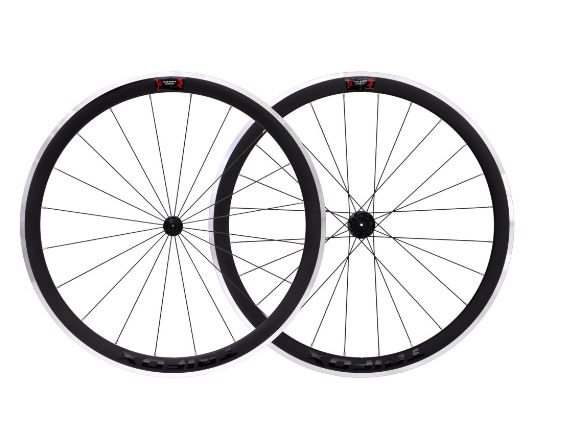
Selecting a good road wheelset is crucial for enhancing both speed and durability on your bike. The right wheelset can significantly impact your performance, whether you're racing or enjoying a long ride. Here’s how to choose the perfect road wheelset to meet your needs. First, consider the material of the wheelset. Alloy wheels, like those available on [Trifox Alloy Road Wheels], are a popular choice due to their excellent balance of weight, strength, and affordability. Alloy wheels are durable and can withstand the rigors of various road conditions, making them an ideal choice for many cyclists. Next, assess the wheel size and rim depth. The most common road bike wheel size is 700c, which offers a good blend of speed and stability. Rim depth plays a crucial role in aerodynamics: deeper rims (40mm and above) provide better aerodynamic benefits, reducing drag and helping you maintain higher speeds with less effort. However, deeper rims can be heavier and more susceptible to crosswinds. If you frequently ride in windy areas or prefer climbing, a shallower rim (20-30mm) might be more suitable. The spoke count is another important factor. Wheels with fewer spokes (16-24) tend to be lighter and more aerodynamic, making them ideal for racing. However, they may not be as robust as wheels with more spokes (28-36). If durability and strength are your primary concerns, especially if you ride on rough roads, opt for a higher spoke count. Hub quality also affects performance. High-quality hubs provide smoother rotation and greater reliability. Look for wheels with sealed bearings, which require less maintenance and offer better protection against dirt and moisture. Consider the weight of the wheelset. Lighter wheels accelerate faster and make climbing easier, but they should not compromise strength and durability. Alloy wheels strike a good balance here, offering lightweight properties without sacrificing robustness. Lastly, think about your budget. Investing in a quality wheelset can significantly enhance your riding experience. While high-end wheels can be costly, there are many excellent options available at different price points. The [Trifox Alloy Road Wheels] provide a range of choices that combine performance and value. In conclusion, selecting a good road wheelset involves considering material, size, rim depth, spoke count, hub quality, weight, and budget. By taking these factors into account, you can find a wheelset that boosts your speed and durability, ensuring a better ride. Happy cycling!
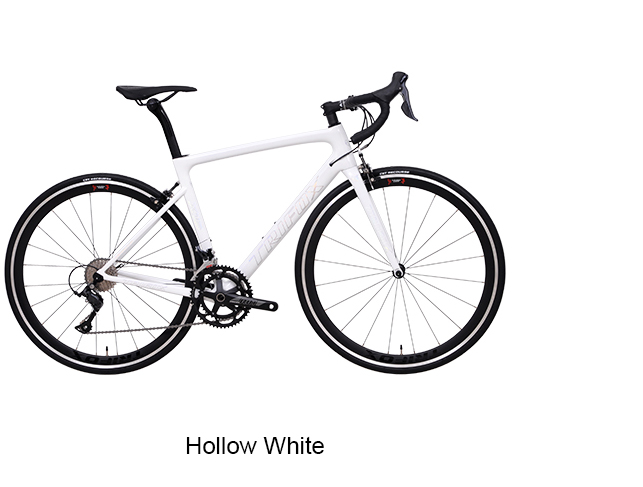
Tuning up your road bike is essential for maintaining peak performance and ensuring a smooth, efficient ride. Regular maintenance can also extend the lifespan of your bike. Here’s a step-by-step guide to tuning up your road bike for optimal performance. First, start with a thorough cleaning. Dirt and grime can affect the efficiency of your components. Use a gentle bike cleaner, water, and a soft brush to clean the frame, chain, gears, and other parts. This not only makes your bike look good but also helps you spot any potential issues. Next, check the tires. Ensure they are properly inflated to the recommended pressure, which can usually be found on the tire sidewall. Inspect for any cuts, wear, or embedded objects that might cause a flat. If your tires are worn out, consider upgrading to high-quality options available on [Trifox Road Bikes]. The drivetrain is crucial for smooth gear shifting and overall performance. Start by inspecting the chain for wear. A worn-out chain can damage the cassette and chainrings. Use a chain checker tool to measure wear and replace if necessary. Clean and lubricate the chain to ensure smooth operation. Check your brake system thoroughly. Inspect the brake pads for wear and replace them if they are too thin. Ensure the brake cables are in good condition and adjust the brake tension if needed. Properly functioning brakes are essential for safety and control. Next, adjust the gears. Use the barrel adjuster to fine-tune the derailleur's position, ensuring smooth and precise shifting. If the shifting is still not perfect, consider taking your bike to a professional for a detailed adjustment. Inspect all bolts and screws. Use a torque wrench to ensure that everything is tightened to the manufacturer’s specifications. Over-tightening or under-tightening can lead to component failure. Lastly, check the alignment of your wheels. Spin each wheel and observe if it wobbles side-to-side. If you notice a wobble, it might need truing. This is best done by a professional unless you have the right tools and expertise. In conclusion, regular tune-ups are key to keeping your road bike performing at its best. By following these steps, you can enjoy smoother rides and extend the life of your bike. For high-quality components and road bikes, visit [Trifox Road Bikes]. Happy riding!

















